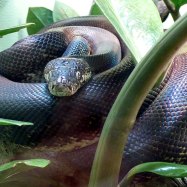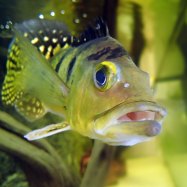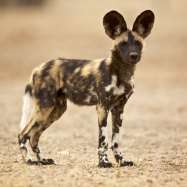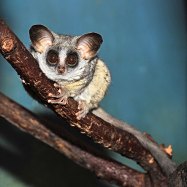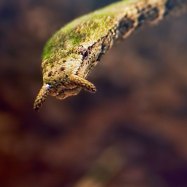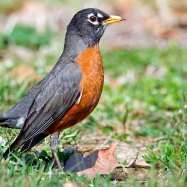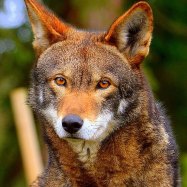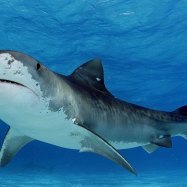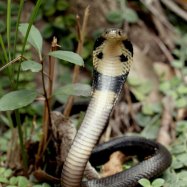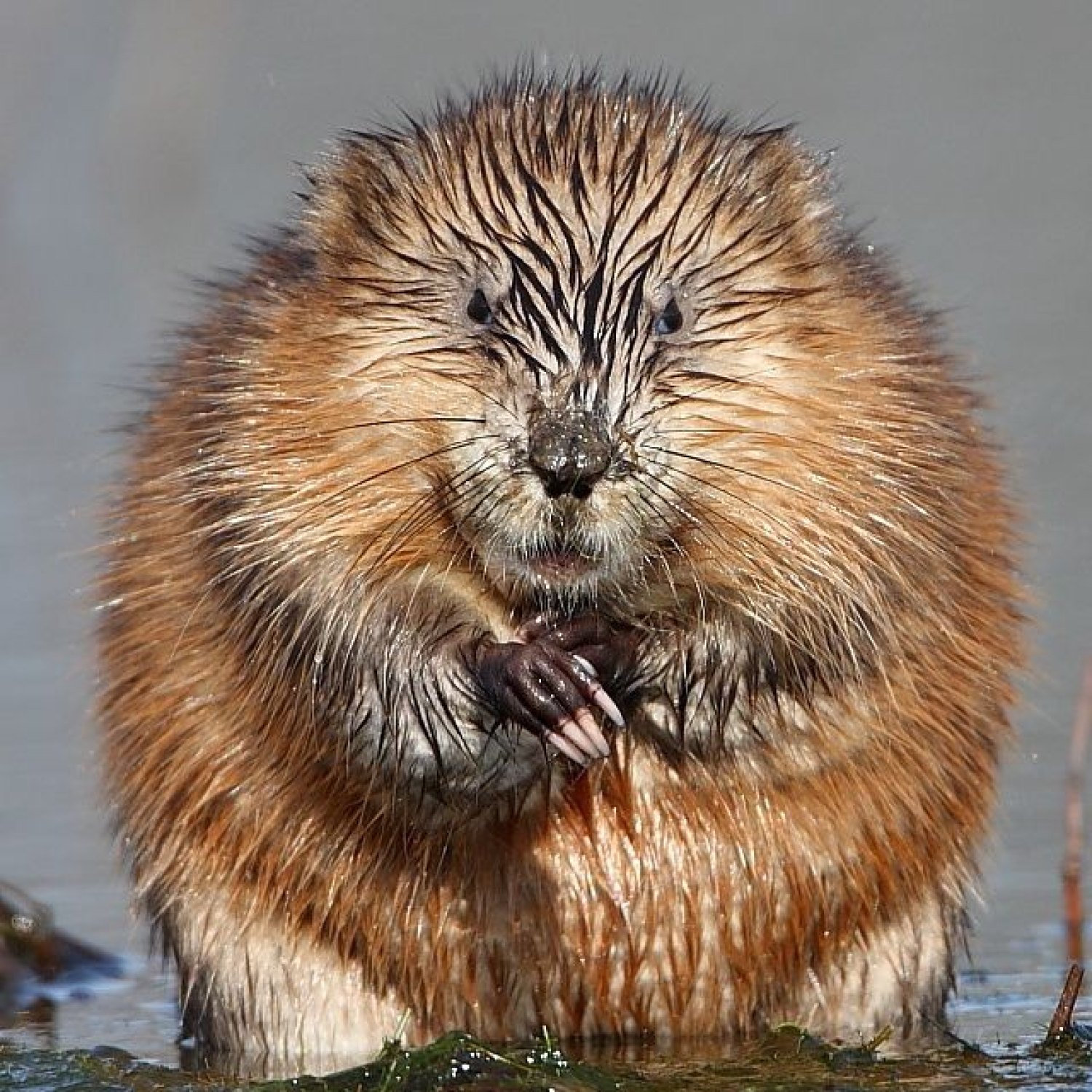
Muskrat
40-64 cm
The muskrat, found in North America, is a medium-sized, stocky animal that belongs to the Cricetidae family. It measures between 40-64 cm and can be spotted in various regions of this continent. Their distinctive body shape sets them apart from other members of the rodent family. #Muskrat #NorthAmerica #Cricetidae
Animal Details Summary:
Common Name: Muskrat
Kingdom: Animalia
Habitat: Wetlands, marshes, ponds, lakes, rivers
The Muskrat: A Fascinating Aquatic Rodent
In the world of rodents, there are many fascinating species, and the muskrat is no exception. This aquatic mammal can be found in various regions of North America and is known for its unique adaptations and behaviors. From its distinctive brown coloration to its herbivorous diet, there is so much to discover about this remarkable animal. Join me as we dive into the world of the muskrat and uncover its secrets Muskrat.Scientific Classification
Before we delve into the details, let's first establish the muskrat's scientific classification. Its scientific name is Ondatra zibethicus, with its common name being the same as its scientific name, muskrat. It belongs to the Kingdom Animalia, the Phylum Chordata, and the Class Mammalia. Within the order Rodentia, muskrats belong to the family Cricetidae, which also includes other rodents such as voles and lemmings.Habitat and Geographical Distribution
Muskrats are semi-aquatic animals, meaning they spend most of their time in and around water. They are well-adapted to life in wetlands, marshes, ponds, lakes, and rivers, utilizing their unique adaptations to thrive in these environments. The muskrat is a native species of North America, and its geographical distribution spans across the United States and Canada.Physical Characteristics
One of the most noticeable features of the muskrat is its brown coloration. This coloration serves as camouflage, helping them blend in with their surroundings Marine Toad. Muskrats are medium-sized rodents, with adults ranging from 40-64 centimeters in length. They have stocky bodies with a long, slightly flattened tail that acts as a rudder in the water. Their hind feet are partially webbed, making them excellent swimmers.Behavior and Adaptations
As mentioned earlier, muskrats are well-adapted to their aquatic habitat. They are proficient swimmers, capable of holding their breath for up to 15 minutes. They also have the ability to close their ears and nostrils while swimming underwater, preventing water from entering these openings. In addition, their thick, waterproof fur helps them regulate their body temperature in cold water.Muskrats are also skilled diggers, using their sharp front claws to burrow into riverbanks and create dens. These dens provide shelter from predators and serve as a place to rear their young. Muskrats are also herbivores, and their diet primarily consists of aquatic plants such as cattails, water lilies, and duckweed. They may also feed on small invertebrates, but plants make up the majority of their diet.
Country of Origin and Present Day Muskrats
The muskrat is native to North America, specifically the United States and Canada. In the early 20th century, muskrats were introduced to Europe for fur farming purposes. However, some escaped and established wild populations, causing concern for native species. Today, muskrats can also be found in parts of Europe, Asia, and South America, where they have been introduced.In their native range, muskrats play an important ecological role. They help maintain the balance of wetland ecosystems by feeding on aquatic plants and creating burrows that provide shelter for other animals. They are also a food source for a variety of predators, including coyotes, foxes, and birds of prey.
Threats and Conservation Efforts
While muskrats are not considered endangered, they do face threats in some regions. Habitat loss due to human development and pollution of their waterways are the main challenges for muskrats. In some areas, they are also hunted for their fur. To mitigate these threats, conservation efforts have been put in place to protect wetland habitats and regulate hunting.In addition, muskrats have been successfully introduced to new areas for conservation purposes. For example, they were introduced to marshes in Maryland, USA, to control the spread of invasive plant species. Due to their strong digging abilities and herbivorous diet, muskrats were able to help restore the balance of these ecosystems.
The Muskrat and Humans
In Native American cultures, muskrats held a significant role. They were revered as symbols of abundance and fertility, and their fur was highly valued for its warmth. The muskrat also has a significant role in modern society, being a popular subject in children's books and cartoons.In addition, muskrats play a vital role in the fur industry, specifically in North America. Their dense, water-resistant fur is prized for use in clothing and has been a valuable commodity for many years. However, with the rise of synthetic alternatives, the demand for muskrat fur has declined.
In Conclusion
The muskrat may not be as well-known as other aquatic animals such as beavers or otters, but it is a fascinating species with unique adaptations and behaviors. From its semi-aquatic lifestyle to its role in wetland ecosystems, the muskrat has an important place in the natural world. As we continue to learn more about this remarkable animal, it is crucial to ensure its protection and preservation for future generations to appreciate.

Muskrat
Animal Details Muskrat - Scientific Name: Ondatra zibethicus
- Category: Animals M
- Scientific Name: Ondatra zibethicus
- Common Name: Muskrat
- Kingdom: Animalia
- Phylum: Chordata
- Class: Mammalia
- Order: Rodentia
- Family: Cricetidae
- Habitat: Wetlands, marshes, ponds, lakes, rivers
- Feeding Method: Herbivorous
- Geographical Distribution: North America
- Country of Origin: United States and Canada
- Location: Various regions of North America
- Animal Coloration: Brown
- Body Shape: Medium-sized, stocky body
- Length: 40-64 cm
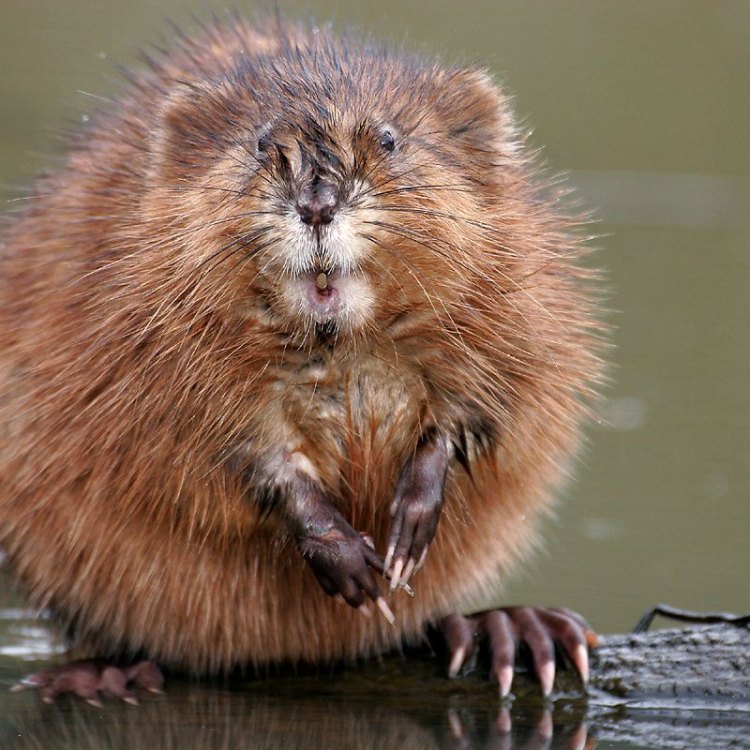
Muskrat
- Adult Size: 1-3.3 pounds
- Average Lifespan: 2-4 years
- Reproduction: Sexual
- Reproductive Behavior: Monogamous
- Sound or Call: Whistles, squeaks, chirps
- Migration Pattern: Non-migratory
- Social Groups: Solitary or small groups
- Behavior: Semi-aquatic, active both day and night
- Threats: Habitat loss, pollution, predation
- Conservation Status: Least Concern
- Impact on Ecosystem: Important in wetland ecosystems
- Human Use: Fur trapping, food source
- Distinctive Features: Webbed hind feet, long scaly tail
- Interesting Facts: Builds lodges and canals, excellent swimmers
- Predator: Mink, fox, coyote, owl
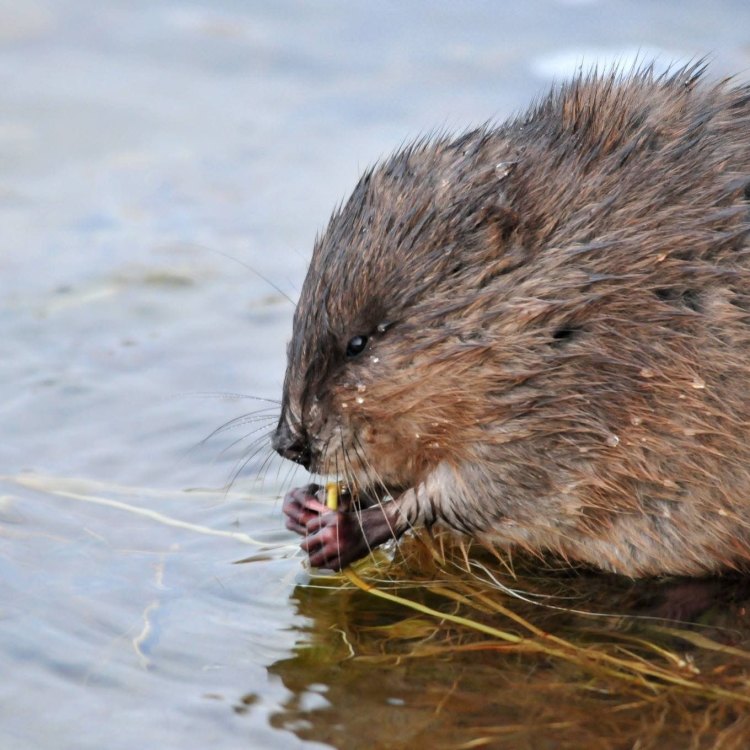
Ondatra zibethicus
The Fascinating World of the Muskrat: A Semi-Aquatic Wonder of Nature
The muskrat, also known as Ondatra zibethicus, is a member of the rodent family and is native to North America. Although not as well-known as other animals, the muskrat is a fascinating and important creature in the wetland ecosystem.Adult muskrats typically grow to be 1-3.3 pounds, with a lifespan of 2-4 years PeaceOfAnimals.Com. However, they have been known to live up to 8 years in captivity. They are relatively small in size but play a significant role in their habitat. Let's dive deeper into the world of the muskrat and discover what makes it so unique.
Reproduction and Behavior
Muskrats are a sexual species and reproduce through mating. They have a monogamous reproductive behavior, meaning they have one partner for the duration of the breeding season. This behavior is essential for their survival, as they work together to build their homes and raise their young.During the breeding season, which typically occurs from March to September, muskrats become more territorial and will fight off other muskrats that try to enter their territory. Once mated, females give birth to a litter of 4-7 young, known as kits. The kits are born with a full coat of fur and are ready to swim and gather food within hours of being born Meiolania.
Muskrats are known for their distinct sound or call, which includes whistles, squeaks, and chirps. These vocalizations are used to communicate with other muskrats, especially during the breeding season, and to alert potential threats.
Migratory Patterns and Social Groups
Unlike other rodents, muskrats are non-migratory and tend to stay within their territory for their entire lifespan. They are semi-aquatic animals, meaning they are equally comfortable on land and in the water. This gives them an advantage in finding food and avoiding predators.Muskrats can be found living solitary lives or in small groups of 2-4 individuals. In some cases, larger groups may exist, especially during the breeding season. Within a group, a hierarchy may be established based on age and gender, with older and more experienced muskrats taking the lead in building homes and finding food.
Behavior and Habitat
As semi-aquatic animals, muskrats are active both day and night and are excellent swimmers. They have webbed hind feet and long, scaly tails that help them propel through the water. These features also aid them in creating burrows and channels in the water's edge, where they build their homes.Their homes, also known as lodges, are made from vegetation, mud, and sticks. These lodges are typically cone-shaped and can be up to 3 feet tall, providing shelter and protection from predators. Muskrats will also create canals, which they use to access feeding and nesting areas.
Muskrats are important in the wetland ecosystem as they help maintain the balance of the food chain. They are herbivores and feed on aquatic plants and roots, which also helps in controlling the plant growth and preventing the wetlands from becoming overgrown.
Threats and Conservation Status
Unfortunately, muskrats face several threats that endanger their survival. Habitat loss, caused by human development and destruction of wetlands, is a significant threat to their existence. Pollution, especially from chemicals and toxins, also poses a threat to muskrats and their habitat.Predation is another significant threat to muskrats, and they have several natural predators, including minks, foxes, coyotes, and owls. These predators can significantly impact muskrat populations, especially in areas where their habitats are already endangered.
Despite these challenges, muskrats are currently listed as "Least Concern" on the International Union for Conservation of Nature (IUCN) Red List. However, continued conservation efforts are necessary to ensure their survival and the balance of the wetland ecosystem.
Human Use and Distinctive Features
Humans have utilized muskrats for centuries as a source of food and fur. Their fur is dense and waterproof, making them ideal for trapping and use in making hats, coats, and other garments. However, their use in fur trapping has significantly decreased due to conservation efforts.One of the most distinctive features of the muskrat is their long scaly tail, which is nearly half the length of their body. The tail helps them navigate through the water and serves as a significant balancing tool. Their webbed hind feet also contribute to their excellent swimming abilities, making them swift and graceful in the water.
Interesting Facts and Predators
Muskrats are intriguing creatures with several interesting facts. One of the most fascinating things about them is their ability to build their lodges and canals, which can be up to 100 feet long. These homes are essential for their survival, and they are known to make multiple lodges to use throughout the year.As mentioned earlier, muskrats are excellent swimmers. They can hold their breath for up to 20 minutes and swim at speeds of up to 3 miles per hour. This makes them excellent at escaping predators, which include minks, foxes, coyotes, and owls. However, despite these risks, muskrats remain an abundant species in the wild.
In Conclusion
The muskrat may not be the most well-known or glamorous animal, but its essential role in the wetland ecosystem cannot be ignored. From its unique features to its fascinating behavior and reproductive habits, the muskrat is truly a remarkable creature.However, their survival is threatened by various factors, including habitat loss and pollution. As a society, we must recognize the importance of these animals and take necessary measures to ensure their survival. Only then can we continue to appreciate the wonder and beauty of the muskrat in the wild.
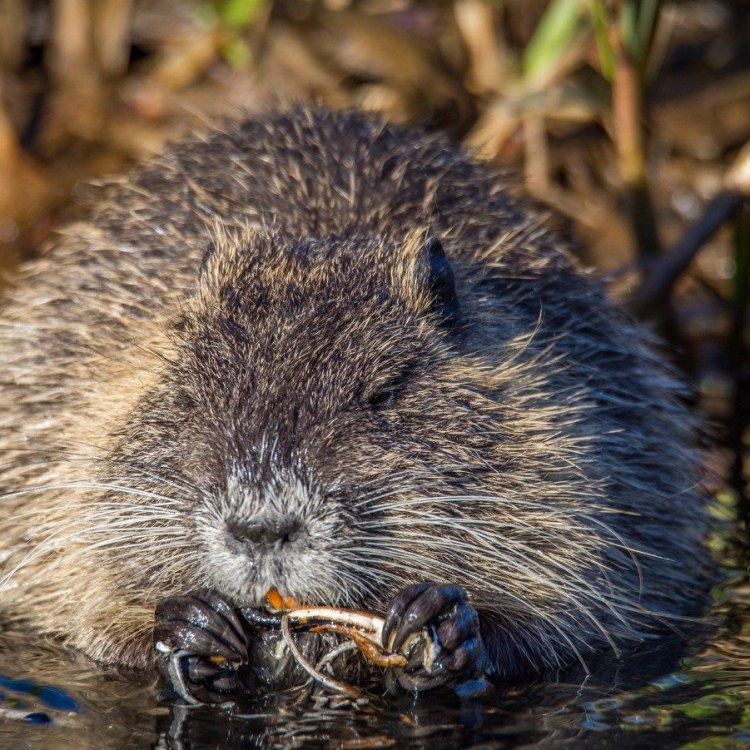
The Muskrat: A Fascinating Aquatic Rodent
Disclaimer: The content provided is for informational purposes only. We cannot guarantee the accuracy of the information on this page 100%. All information provided here may change without prior notice.

